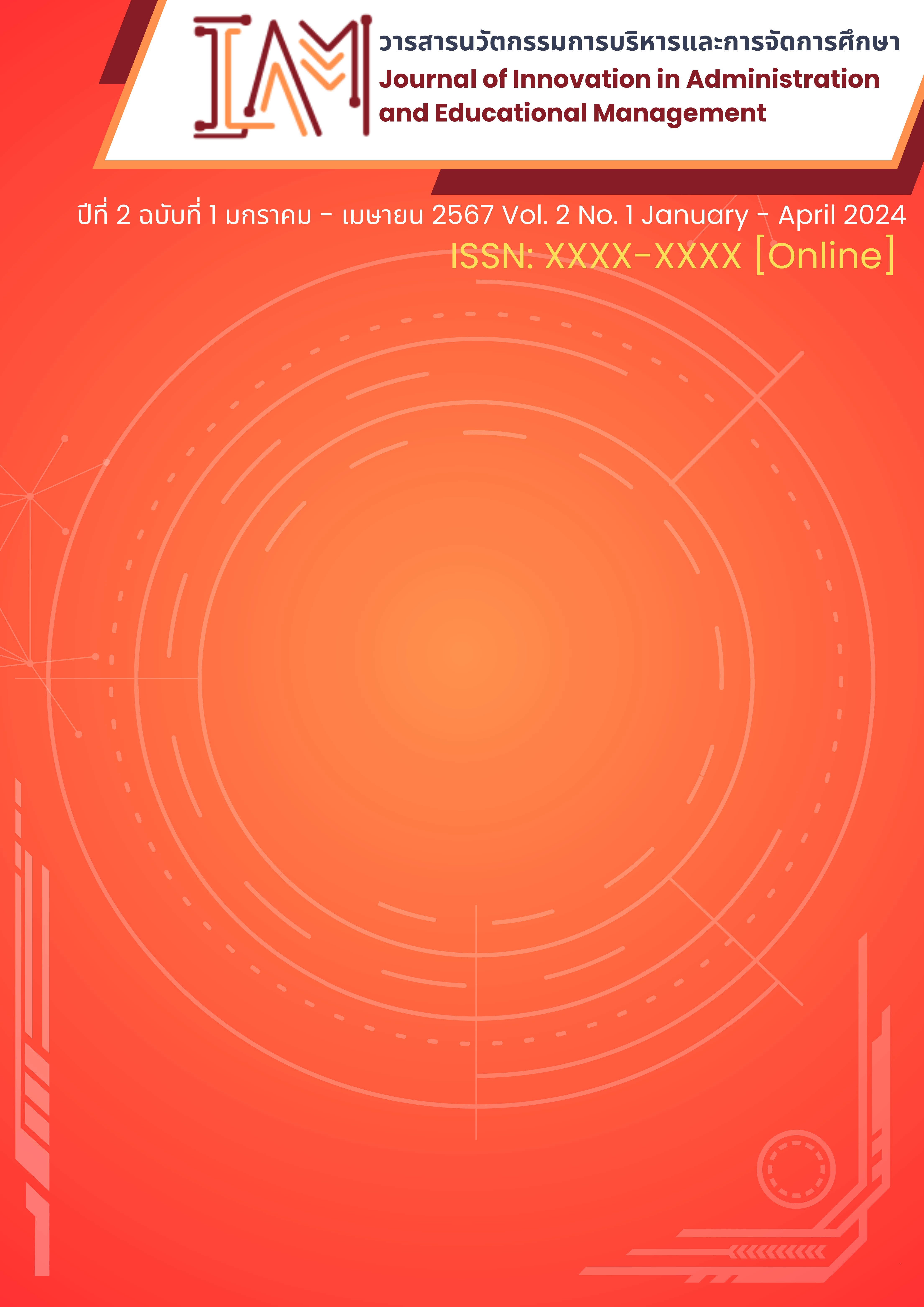บทบาทภาครัฐในการแก้ไขปัญหาความยากจนในมิติทางเศรษฐกิจและสังคม
คำสำคัญ:
บทบาทภาครัฐ, ปัญหาความยากจน, มิติทางเศรษฐกิจและสังคมบทคัดย่อ
บทความนี้มีวัตถุประสงค์เพื่อศึกษาบทบาทของภาครัฐในการแก้ไขปัญหาความยากจนในมิติทางเศรษฐกิจและสังคม ความยากจนเป็นปัญหาที่ซับซ้อนซึ่งเชื่อมโยงกับปัจจัยหลายด้าน การแก้ไขปัญหานี้จำเป็นต้องอาศัยบทบาทของรัฐในการดำเนินนโยบายเศรษฐกิจมหภาค ได้แก่ นโยบายการคลังที่มุ่งเน้นการลงทุนในโครงสร้างพื้นฐานและสวัสดิการสังคม เพื่อเสริมสร้างโอกาสและลดความเหลื่อมล้ำ และนโยบายการเงินที่กระตุ้นการลงทุนและการจ้างงานเพื่อลดความยากจน การออกแบบและประเมินนโยบายอย่างรอบคอบและยืดหยุ่นช่วยให้รัฐสามารถรับมือกับปัจจัยภายนอก เช่น วิกฤตเศรษฐกิจ การสร้างระบบการบริหารที่โปร่งใสและการมีส่วนร่วมของทุกภาคส่วนช่วยให้การดำเนินนโยบายมีประสิทธิภาพและยั่งยืน การประยุกต์ใช้นโยบายที่ตอบสนองต่อสภาพเศรษฐกิจที่เปลี่ยนแปลงเป็นปัจจัยสำคัญในการสร้างความเท่าเทียมและความยั่งยืนในสังคม
Downloads
เอกสารอ้างอิง
Acemoglu, D., & Robinson, J. A. (2012). Why nations fail: The origins of power, prosperity, and poverty. New York: Crown Business.
Atkinson, A. B. (2015). Inequality: What can be done?. Cambridge: Harvard University Press.
Banerjee, A. V., & Duflo, E. (2011). Poor economics: A radical rethinking of the way to fight global poverty. New York: Public Affairs.
Barr, N. (2012). The economics of the welfare state. New York: Oxford University Press.
Barrientos, A., & Hulme, D. (2008). Social protection for the poor and poorest: Concepts, policies, and politics. London: Palgrave Macmillan.
Bloom, D. E., & Canning, D. (2008). Population health and economic growth. Retrieved December 25, 2023, from https://openknowledge.worldbank.org/server/
api/core/bitstreams/4e2a9443-7596-5003-88c6-ebc8379a49f7/content
Chambers, R. (1994). Participatory rural appraisal (PRA): Analysis of experience. World Development, 22(9), 1253 1268.
Collier, P. (2007). The bottom billion: Why the poorest countries are failing and what can be done about it. New York: Oxford University Press.
Devereux, S. (2002). Social protection for the poor: Lessons from recent international experience. Retrieved December 23, 2023, from https://www.ids.ac.uk/download
.php?file=files/Wp142.pdf
Esping-Andersen, G. (1990). The three worlds of welfare capitalism. Cambridge: Polity Press.
Mansuri, G., & Rao, V. (2013). Localizing development: Does participation work? World Bank Publications. Retrieved December 23, 2023, from https://openknowledge.
worldbank.org/entities/publication/7ec97d6d-602c-5525-858a-0bfc6cafff7f
Midgley, J. (1997). Social welfare in global context. Washington DC: SAGE Publications.
Milanovic, B. (2016). Global inequality: A new approach for the age of globalization. Cambridge: Harvard University Press.
OECD. (2020). Education at a Glance 2020: OECD Indicators. Paris: OECD Publishing.
Pretty, J. (1995). Participatory learning for sustainable agriculture. World Development, 23(8), 1247 – 1263.
Putnam, R. D. (2000). Bowling alone: The collapse and revival of American community. New York: Simon & Schuster.
Ravallion, M. (2020). Poverty and Shared Prosperity 2020: Reversals of Fortune. Retrieved December 22, 2023, from https://www.worldbank.org/en/publication/
poverty-and-shared-prosperity-2020
Sen, A. (1999). Development as Freedom. New York: Anchor Books.
Smith, A. (2019). Analysis on socio-economic policies. Journal of Policy Studies, 15(2), 45-67.
Stiglitz, J. E. (2018). Globalization and its discontents revisited: Anti-globalization in the era of Trump.. New York: W. W. Norton & Company.
Todaro, M. P., & Smith, S. C. (2015). Economic development. England: Pearson.
UNESCO. (2015). Education for all 2000-2015: Achievements and challenges. Retrieved December 20, 2023, from https://www.unesco.org/gem-report/en/efa-achievements-challenges.
UNESCO. (2018). Global Education Monitoring Report 2018. Retrieved December 20, 2023, from https://unesdoc.unesco.org/ark:/48223/pf0000261593.
United Nations. (2015). Transforming our world: The 2030 agenda for sustainable development. Retrieved December 20, 2023, from https://sdgs.un.org/2030agenda.
World Bank. (2022). World Development Report 2022: Finance for an equitable recovery. Retrieved December 20, 2023, from https://www.worldbank.org/en/
publication/wdr2022
ดาวน์โหลด
เผยแพร่แล้ว
รูปแบบการอ้างอิง
ฉบับ
ประเภทบทความ
สัญญาอนุญาต

อนุญาตภายใต้เงื่อนไข Creative Commons Attribution-NonCommercial-NoDerivatives 4.0 International License.






